Karate Kime – the secret of the „superpower“ in karate!
Hard to explain and often mystically transfigured – the Karate Kime!
Here is an attempt to shed some light on this special power, which is achieved through the optimal balance between body tension, timing and focus on the target area!
Kime – Meaning of this term
„Kime“ comes from the verb kimeru, meaning to fix or decide. In the case of karate, it can be interpreted as finishing or fixing a technique. It is about the optimal end of the execution, which can be applied to all techniques: Changes of stance, in blocking or just as usual in a fist punch. In other words, the stance, block or punch is brought to a perfect end position at the right time, with the necessary speed and in the right place.
However, if a sensei thinks that the oizuki should be performed more strongly and with full body effort, theoretically another Japanese term would actually be more accurate instead of kime: Zentai ryoku – with full body effort!
But usually it has become common practice in karate to always use the term „kime“ for strong and focused techniques.
Relaxation as the first key to success
Basically, a relaxed posture is necessary for all martial arts in order to be able to react flexibly and quickly to the opponent’s actions. Beginners in particular are usually too tense because tension gives the feeling of security and strength. But exactly the opposite is the case: tension wastes strength and also slows down the ability to react.
In the first years of karate, one learns to switch the musculature from everyday use to fighting technique. For example, when lifting or pressing, the biceps or triceps are tensed from the beginning of the activity, while the antagonist muscles are relaxed: So when the triceps (agonist) pushes up a load, the biceps (antagonist) automatically relaxes.
Now, in generating optimal kime, all muscles are relaxed at the beginning of the technique (but not completely relaxed – a certain, loose basic tension is necessary to start the technique). But at the moment of impact, as many muscles as possible (i.e. both agonist and antagonist) are tensed in order to create a shockwave through this change from relaxation to tension and to achieve the focusing of energy on an impulse moment. The greater the difference between relaxation and tension, the greater the impulse.
It is also important to distribute the tension evenly throughout the body. If one part of the body is too weakly tensioned (e.g. shoulder, elbow or back leg…), part of the energy is dissipated at this weak point.
Kime – shock wave or kinetic energy in the hit object
The final impulse of a technique is effected neither AT the hit surface nor BY the hit object, but IN the hit object. In training without protective gloves, it is stopped at the hit surface because of the risk of injury (jap. „sundome“), but in the imagination the energy should be introduced into the body.
If used seriously, the hit focus is then placed 2-3cm behind the surface and the kime is unfolded there. One does not hit with the intention of hitting through the obstacle – the energy would be distributed over too long a path and therefore no kime effect would be achieved.
In contrast, the punch of a boxer must very well carry out a further path, because the crumple zone of the glove must be overcome before the hit effect. Therefore, the training of a boxer will always look different from that of a karateka and also a training for sports kumites will be different from that for traditional karate!
By the way, it is hardly or not at all possible to achieve a kime effect with a glove – since a complete, quick closing of the fist is not possible, too little muscle tension can be built up in the fist and forearm. That’s not to say that a glove technique in boxing or „sports-karate“ can’t be very strong as well; just not with „real“ kime.
Another example that is wrongly associated with kime is the fracture test. This is about overcoming a hard resistance, e.g. board or bone, which is why stopping with kime would be counterproductive. This type of hit effect is not as effective as kime when applied to the human body: body tissue is elastic, i.e. a blow that breaks through a wooden board can fizzle out on the human body because it is „absorbed“. The effect is comparable to a projectile: a bullet easily penetrates 10-20cm thick wooden beams, but is stopped by 1cm Kevlar (fabric of bulletproof vests).
In the sense of energy transfer by kime, the hit fist is optimally accelerated (without tension) in order to then discharge the built-up kinetic energy by specifically timed tension in the target (approx. 2-3cm) behind the body surface. In doing so, you stop the movement, but with the feeling that the fist is still moving forward with the stop impulse, i.e. it does not bounce back by stopping. It takes many years of intensive training to work out the difference between rebounding and advancing impulse.
Kime – Mysticism or Physics
Modern sports medicine or training theory knows the principle of „intramuscular coordination“ (IC). This refers to the cooperation of all muscle strands within a muscle. In addition, there is also „intermuscular coordination“, i.e. the interaction of different muscle groups.
The fascinating thing about the „IK“ is the increase in strength WITHOUT muscle gain. This phenomenon finally plausibly explains why we know old masters with thin arms who can easily pry out any muscleman or gasp for air with a loose-looking gyaku-zuki.
This effect is achieved by the following optimizations in the muscle as a training result:
- Frequency – the control of the muscles involved takes place with a higher frequency.
- Synchronization – trained muscles connect when force is used for simultaneous use.
- Recruitment – more muscles participate in the activity, some of untrained muscles often remain idle.
So that would settle everything! But purely physical explanation leaves a stale aftertaste, as we karateka have learned to appreciate and love the stories from our beginner years about almost mystical achievements of ancient karate masters.
To save the honor of mysticism and spirituality: if it were only a matter of targeted muscle and technique training, any athlete with some sense of movement could become an outstanding karate master with great kime; which are actually few and far between!
The secret lies in the intensive mental examination of the processes both in one’s own body and outside (regarding opponents, environment, etc.) and the conscious, but also intuitive-unconscious reflection on each technique. As a result, after decades of training in conjunction with appropriate meditation, the much-vaunted unity of body and mind is achieved. Thus, all senses, mind, breathing, joints and muscles unite in a seemingly effortless action at the right time in a powerful kime.
Because one might think that this special power is drawn from the life energy, i.e. the Chi or Ki, one often mistakenly assumes the syllable „Ki“ as the word origin for kime.
But maybe you are not so wrong, because many years of intensive training can take on the character of spirituality and universal energy😊.
May the Chi be with you!👊
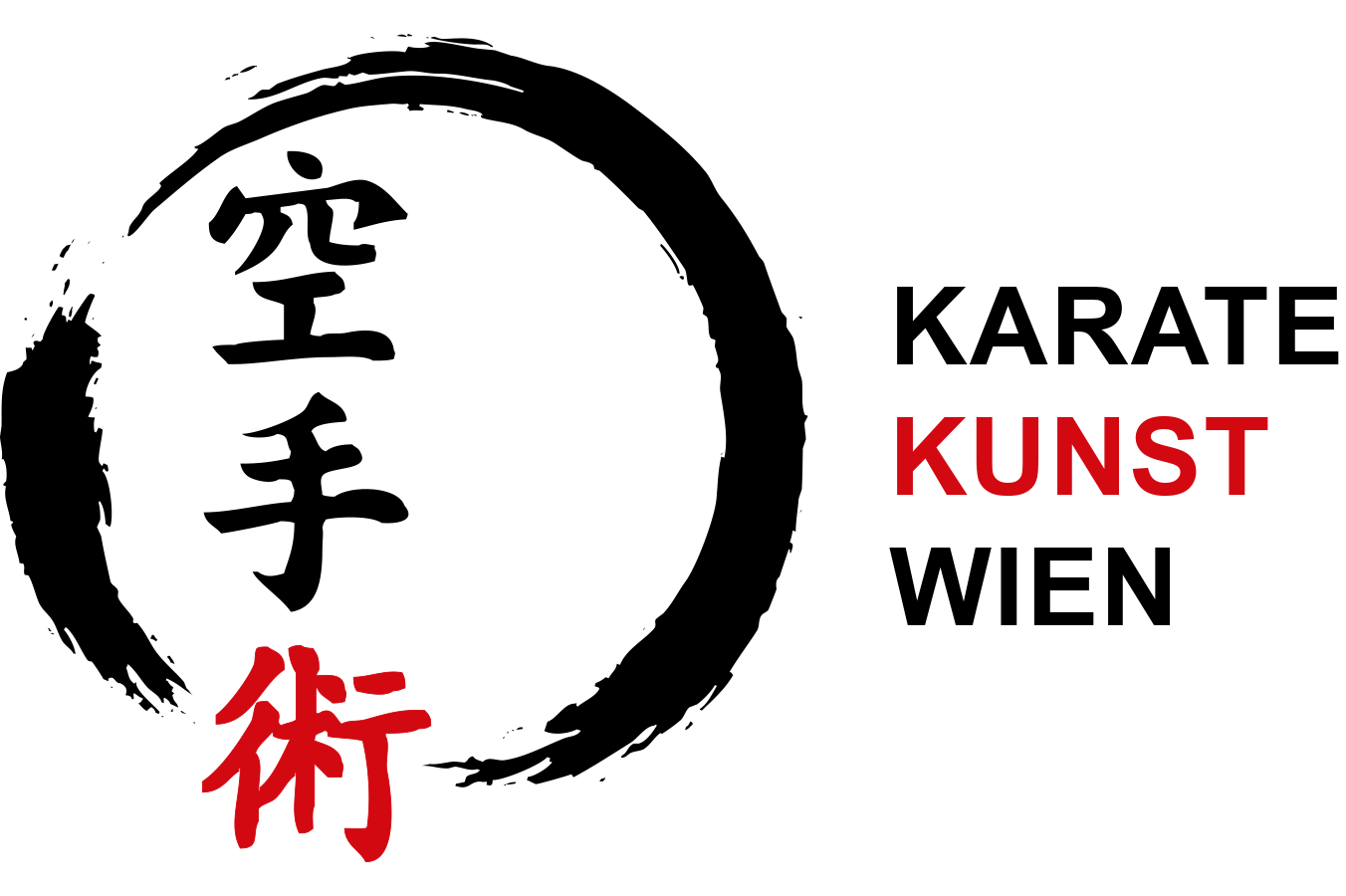
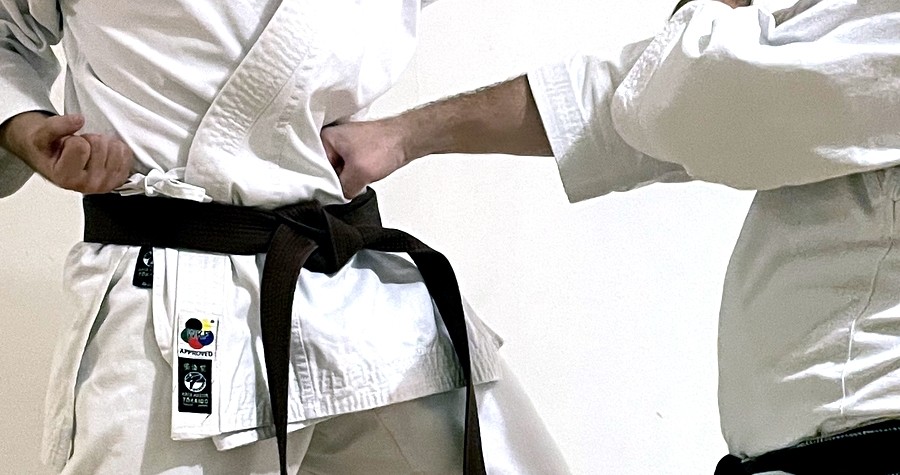
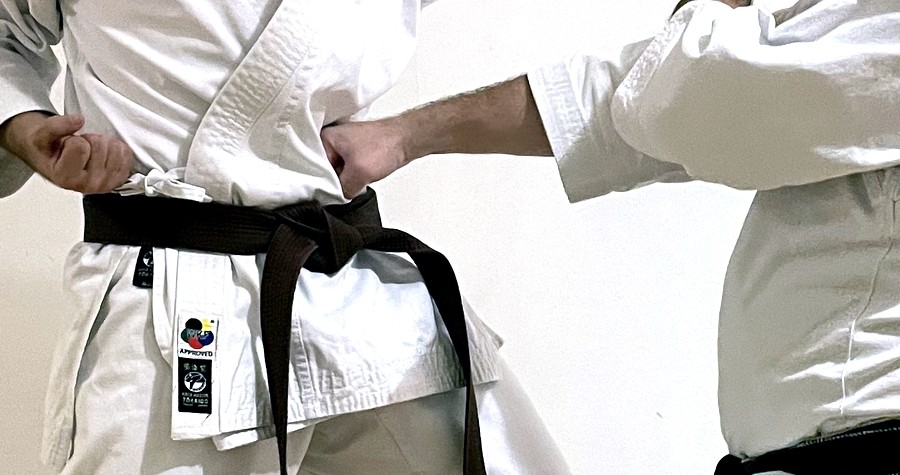

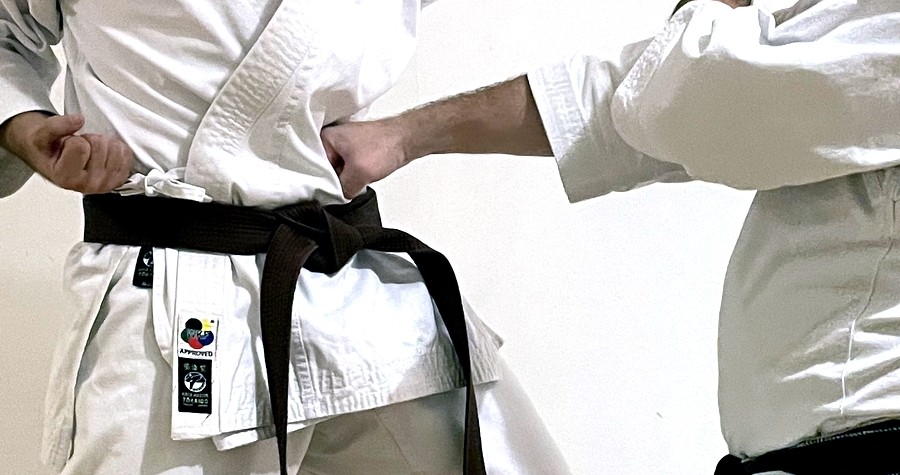
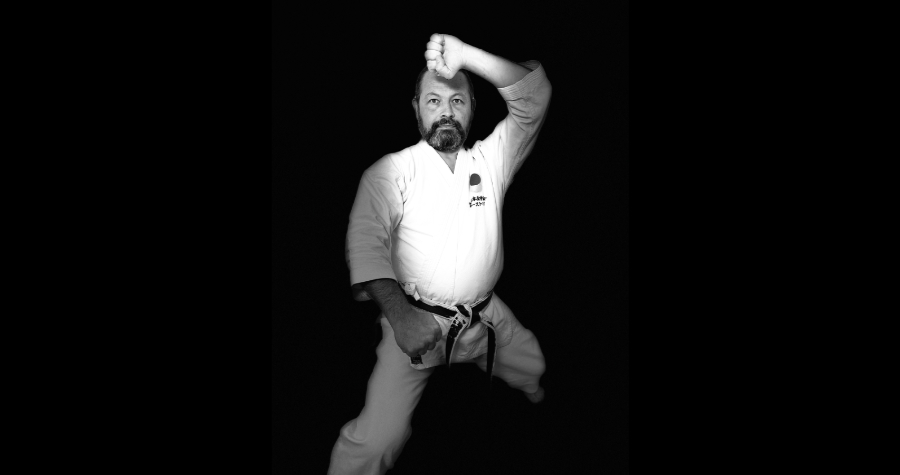 Karatekunst Wien
Karatekunst Wien